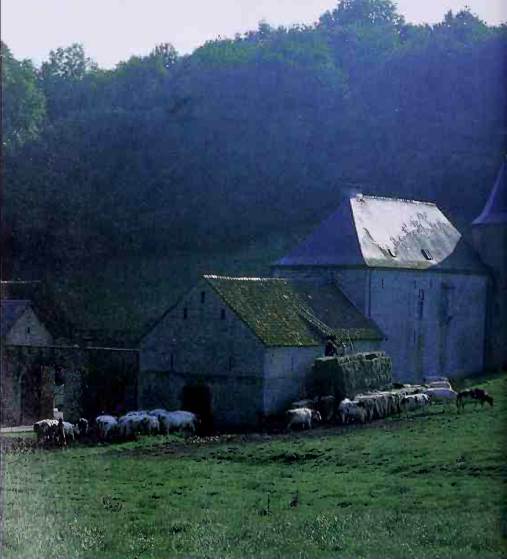Brussels. Economy. Economy in Wallonia and Flanders. Industry and agriculture
Belgium has one of the most highly developed economies in the world. The government owns and manages parts of the nation's transportation system, but the economy is based mainly on free enterprise.
In recent years, Belgium's economy has undergone considerable restructuring. Traditional industries, such as coal mining, have declined. In addition, important industries that were once concentrated in Wallonia, such as the production of steel, have moved to Flanders.

Many of Belgium's key industries, right, rely heavily on foreign trade, due to limited natural resources and a small internal market. Since the heart of the steel industry shifted from Wallonia to the Flanders region, huge petrochemical plants have developed around the seaport of Antwerp.
Economy in Wallonia and Flanders. The province of Hainaut in Wallonia is the country's oldest industrial region. Coal mines along the Sambre River once helped make southern Belgium a prosperous area, but since 1958, many mines have closed down due to high production costs and the exhaustion of the coal deposits.
Steel industries located in Wallonia declined during the worldwide steel crisis of the 1970's and were not modernized thereafter. These plants used coal rather than more-efficient petroleum.
At the same time, much of the farmland in Flanders was transformed into modern industrial areas. The Belgian steel industry, which had been concentrated near the coal mines in Wallonia, moved to Flanders. The industry now uses imported petroleum—instead of coal—to power the steel-making process, so the new steel plants are located near the North Sea. The ports of Antwerp, Ghent, and Zeebrugge have all benefited from the expansion of industry in Flanders.
In the 1970's, the Belgian government established Flanders and Wallonia as relatively independent economic regions. However, Belgium's future economic development depends on the government's success in achieving economic equality for the inhabitants of both areas. Improved cooperation between the Flemings and Walloons is also necessary to reduce Belgium's high rate of unemployment, keep inflation down, and further stimulate the economy's growth.
Industry and agriculture. Steel production is the country's most important manufacturing industry. Belgium is among the world's leading nations in per capita (per person) steel production.
The chemical industry manufactures basic chemicals as well as pharmaceutical products and plastics. Belgium's textile products include its world-famous lace and linen. Food processing, including the manufacture of Belgian chocolates, also ranks as an important industry. And there are more than 100 breweries in Belgium, many located in monasteries.

A carpet factory, above right, in Mouscron, western Belgium, produces one of the country's chief textile products. Belgium's long-established textile industry also exports synthetic fibers, lace, and linen.
Antwerp is Belgium's main seaport and the economic center of Flanders. In addition to its vast trade, the city has many industries, including sugar refining, lacemaking, brewing, and shipbuilding. Antwerp is also a major diamond center. More than half of the world diamond trade is carried on in Antwerp, and the city is also the world's largest diamond-cutting center.
Belgium depends heavily on foreign trade because the country has very few natural resources. The nation's main trading partners are other members of the European Community, but it also does business with Sweden, Switzerland, the United States, and Japan.

Barges crowd Antwerp's busy port, above, which ranks as one of Europe's largest. Located near the mouth of the Schelde River, Antwerp has a varied industry, which includes brewing, diamond cutting and trading, petro- chemicals, and sugar refining.
Machines and other engineering goods make up the largest share of Belgium's foreign trade. The country also imports cotton, grains, and petroleum. Other major exports include chemicals, processed foods, glass products, steel, and textiles.

Highly productive Belgian farms average about 27 acres (11 hectares) in size. Most farms are run by families, many of whom rent the land. Modern farm machinery has replaced the horses which used to pull plows and other farm implements until the 1960's.
Farmers make up less than 5 per cent of the Belgian work force, but they produce more than 80 per cent of the country's food needs. Dairy farming and livestock production account for more than 65 per cent of Belgium's farm income. The nation's agricultural land is used to grow barley, flax, hops, potatoes, sugar beets, and wheat. Belgium also produces large quantities of flowers, fruits, and vegetables.
Date added: 2023-03-21; views: 702;
